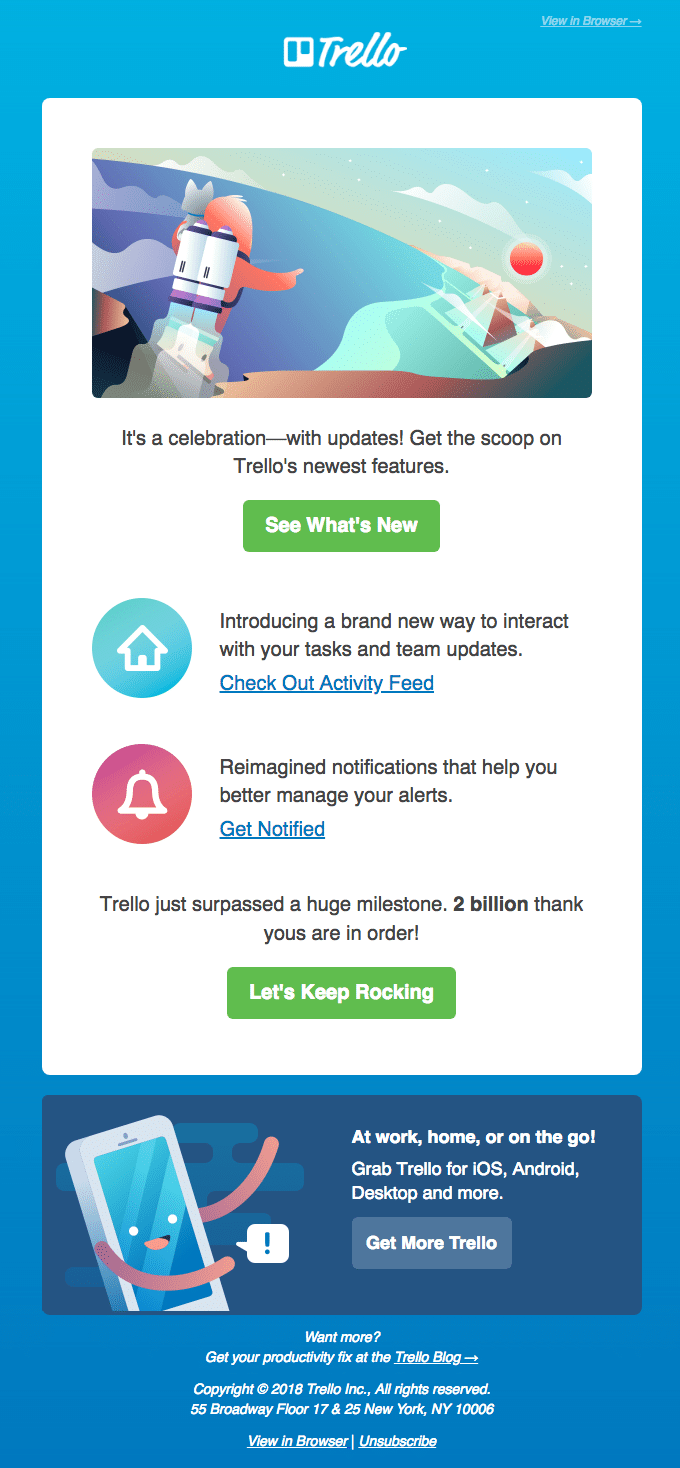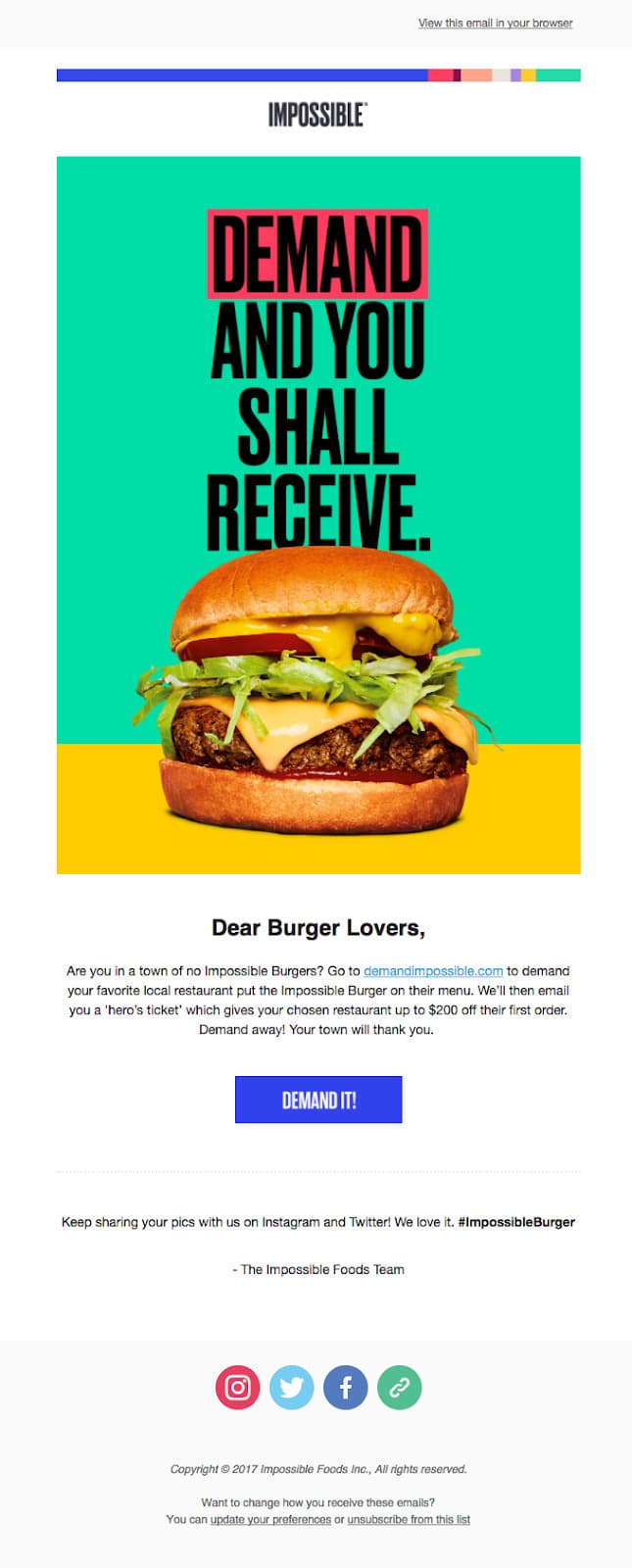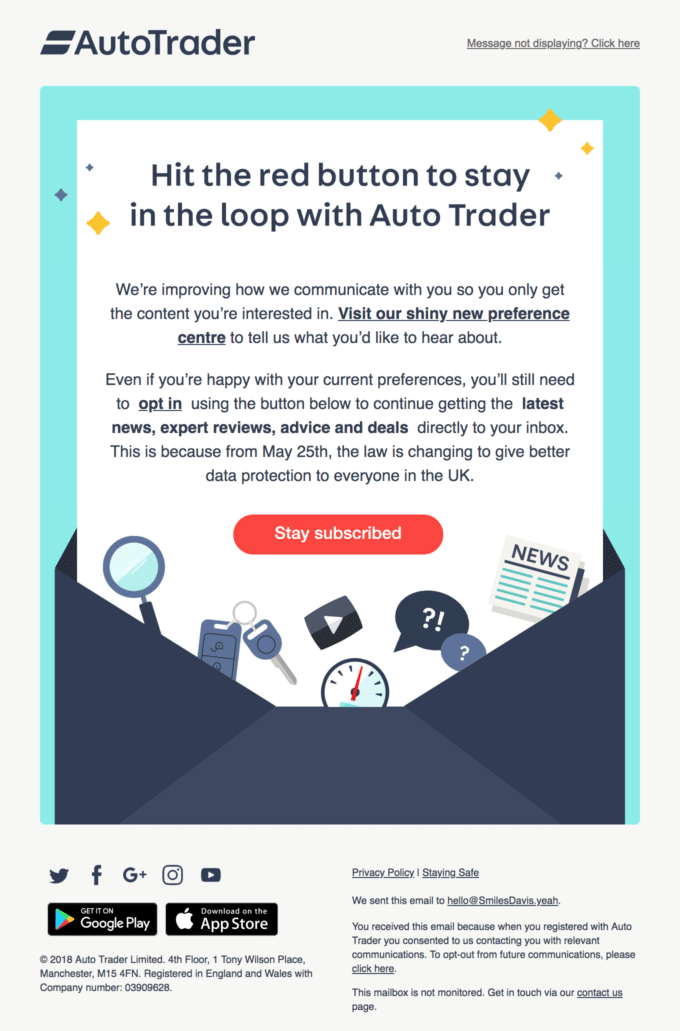What are good open and click-through rates for email campaigns?
Even skilled digital marketers may often find themselves wondering: What really is a good CTR for email campaigns?
By CTR, of course, we mean an email’s click-through rate. When talking about this performance metric, the open rate is also invariably mentioned. They are related, after all.
There are many factors that can affect your email marketing campaign’s open rates and click-through rates, so it’s difficult to figure out a good CTR for email campaigns, much less an open rate.
Industry benchmarks are a great place to start, but it’s also worth looking at the numbers and results of your past campaigns. Doing this will help you understand what you’re currently working with, and enable you to set realistic goals for your upcoming campaigns.
Let’s find out how to set practical benchmarks for email marketing campaigns together. We’ll learn how to improve current open rates and click-through rates, as well.
What you need to know about open rates and click-through rates
Before diving into benchmarking and tips for improving performance metrics, we should review what “open rate” and “click-through rate” actually mean. Let’s go over how they’re calculated, too.
What is an open rate? Why is it an essential email campaign metric?
An open rate is simple enough: It’s the percentage of people that opened your email.
To calculate your email open rate, divide the email’s number of unique opens by the total number of people that saw your email. The total is the number of people that you sent the email to minus the number of bounce instances.
Different types of email campaigns—transactional emails, autoresponders, newsletters, etc.—are bound to have different ideal metrics. You should always aim for higher open rates, however, if your email campaign’s purpose is to raise your brand’s awareness and build relationships with your subscribers.
Source: Really Good Emails
The open rate isn’t the only important performance metric of an email campaign, but it is the essential one. If an email stays unopened, no further trackable actions will happen.
What is a click-through rate? How do you determine a good CTR for email campaigns?
A click-through rate is naturally smaller than its open rate, as it’s the percentage of people that clicked a link embedded in your email.
To calculate your email click-through rate, take the number of people that clicked on one or more links in your email. Divide that by the number of people you sent the email to initially—don’t subtract the bounces. Now take the resulting quotient and multiply it by 100.
As an email marketer, you should be used to the typical click-through rate of an email by now, but it can seem alarming to the uninformed. Depending on your brand’s industry, your email’s CTR can be anywhere from one to five percent.
The click-through rate is more important than the open rate when it comes to lead generation. A low CTR compared to a healthy open rate means that your email’s body needs work, as it’s not compelling enough to result in clicks.
Email marketing campaigns live and die by the strength of their calls to action. In other words, the more people click through, the more effective your emails are. The more successful your emails are in terms of engagement, the higher your ROI.
Other related email campaign performance metrics
To avoid confusion and possible misunderstandings, let’s get the definitions of some related performance metrics out of the way.
Let’s learn about delivery rate, bounce rate and click to open rate.
What should you remember about delivery rate and bounce rate?
Be careful not to interchange the open rate and the delivery rate. The latter is the percentage of people that received the email in their inboxes. It’s usually higher than the open rate.
The bounce rate is the percentage of bounced emails. Note that undelivered is not necessarily the same as bounced. Unless a recipient’s mail server returns the sent email and tells you the email address no longer exists, it’s not counted as a hard bounce.
What is a click-to-open rate and why should you track it?
The click-to-open rate or CTOR is a measurement of how many click-throughs are received through opened emails. To calculate an email’s CTOR, divide the total unique clicks by total unique opens. Multiply this quotient by 100.
This performance metric shows how effective your email copy is at encouraging people to take action. This is critical information, but very specific. While the CTR is informed by the actions of all of an email’s recipients, the click-to-open rate is only concerned with the actions of people that opened the email.
The CTOR is useful if your main focus is to improve your email content. If you’re taking the holistic approach of refining email campaigns based on the most relevant metrics, it’s best to stick to open rates and click-through rates.
About open rate and click-through rate benchmarks
There are two benchmarks for email performance metrics that you should take into account: industry benchmarks and your own. The former is a great overall goal, but the latter is a sensible number to aim for if you’re looking to make steady improvements to increase the success of your email campaigns.
Industry benchmarks are easily available online, but calculating your own will take some careful calculation. We’ll go through both below.
A quick look at average industry benchmarks
Typical benchmarks vary by industry. The identity and focus of your brand can have a big impact on your expected benchmarks.
In general, it is acceptable to start with the average range of each performance metric. Here are significant numbers to remember:
-
Average email open rate: Between 15 to 25 percent.
-
Average email click-through rate: About 2.5 percent.
-
Average email click-to-open rate: Between 20 to 30 percent.
If your own numbers don’t fall into these ranges, then comparing them to the appropriate industry benchmarks is the next step. For example, the food industry’s rates for opens and click-through are higher than average.
Source: Really Good Emails
Setting your own performance metric benchmarks
The key to finding the magic numbers—a reasonable open rate and a good CTR for email campaigns—is to find your baseline and set your own benchmarks. You can’t simply compare your last email’s metrics to industry averages.
Here’s how to calculate your own email campaign’s baseline in order to inform your own benchmarks, step by step:
-
List the open rates and CTRs of your past emails: As an email marketer, you likely have a program to automatically display these for you, so don’t worry about having to calculate the metrics of each email manually. Include all emails sent out in the past three to 12 months.
-
Find out your average performance metrics: Add all the separate open rates listed, then divide the sum by the total emails sent. Do the same for your CTR. The two resulting numbers are now your baseline averages.
-
Select and check email outliers: Make a note of all the unusually low and unusually high open and click-through rates. Inspect the emails connected to these metrics. Try to figure out which parts of the emails caused the unusual metric.
-
Search for patterns in the metrics: This can take some time if you have a whole year’s worth of emails. Some elements worth analyzing are email topics, types of subject lines, and when an email was sent—both the exact time and day of the week. Create a list of qualities shared by emails that have performed well and another list of qualities of those that did poorly.
-
Set your own benchmark to aim for: Look at your baseline and compare it to average industry benchmarks. If you see a big difference, don’t feel like you have to close the gap right away. Set goals that are immediately actionable, instead.
Use the data from identified outliers and patterns to adjust how you formulate and execute email campaigns.
If you happen to find that your metrics are better than the average, there’s still more you can do. Gather what you’ve learned from this particular email campaign of yours and apply the knowledge to improve other future or concurrent campaigns.
Working toward a healthy open rate and a good CTR for email campaigns
Here are some things you can do to encourage more people to open emails and click links within:
-
Start A/B testing to find out what works: You have a head start because you’ve looked at your outliers and patterns. Test what you’ve analyzed and find out what kind of copy and subject line works best for your audience. Vary the send times and days. A good CTR for email campaigns starts here.
-
Improve your email list quality: If your problems stem from delivery and bounce rates, clean up your list of contacts. Invite all your subscribers to opt-in again to make sure they are still interested. Drop non-responders, try to re-engage inactive customers and focus on getting new subscribers.
Source: Really Good Emails
-
Segment your list and send personalized content: Relevant and interesting content is more likely to compel a subscriber to open an email. This is a solid tactic to immediately improve your open rates.
Wrap up
Taking the time to check your average open rates and click-through rates leads to knowing your email campaign’s baseline metrics. Comparing these numbers to average and specific industry benchmarks will show you how much you need to alter your email marketing strategy.
Setting your own benchmarks provides you with realistic and reachable goals. Combine outlier and pattern data gathered from analyzing your email campaign with best email marketing practices, and you can expect higher open and click-through rates.
A huge part of email campaign success relies on copy that is engaging. Aside from monitoring your open and click-through rates, consider aiming for a good click-to-open rate, as well.
MOST RECENT ARTICLES
Want to engage your audience and grow your brand? Try Emma's robust easy-to-use product today.
















